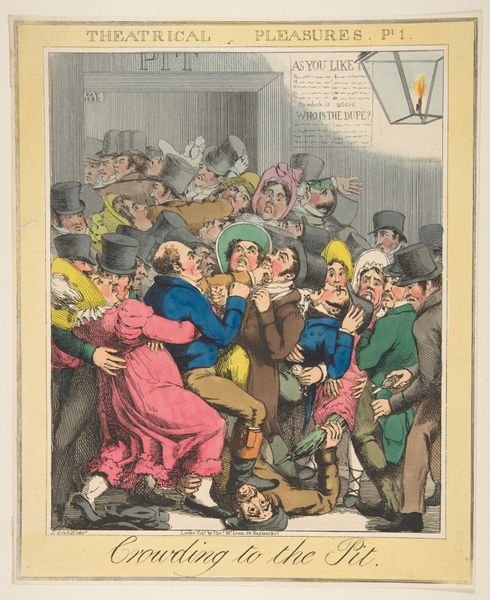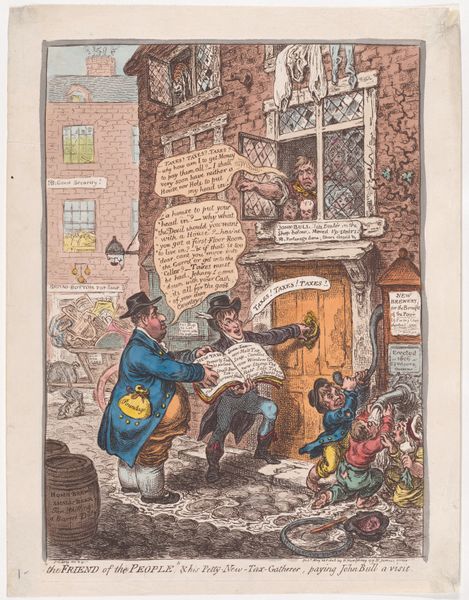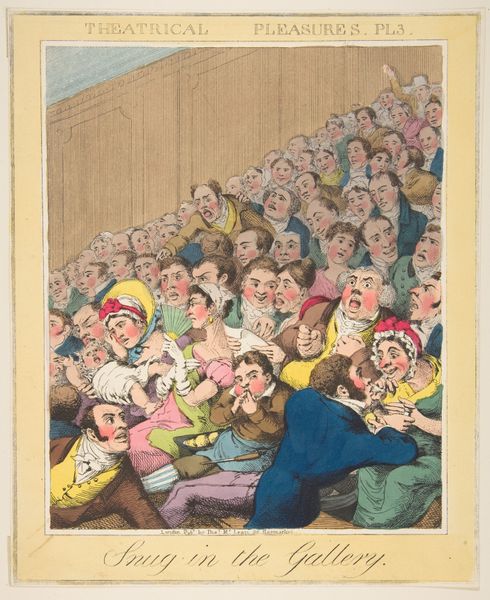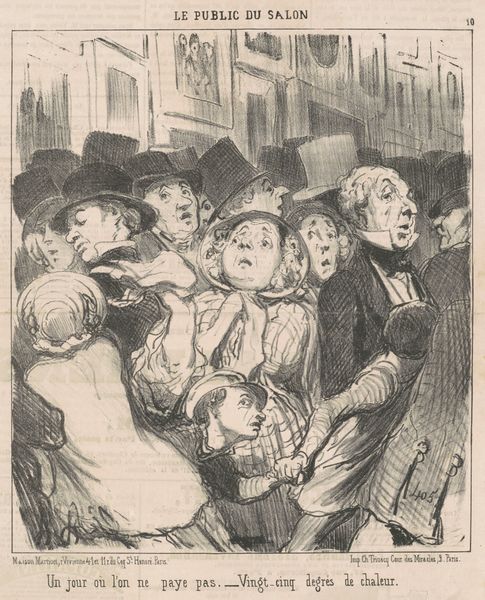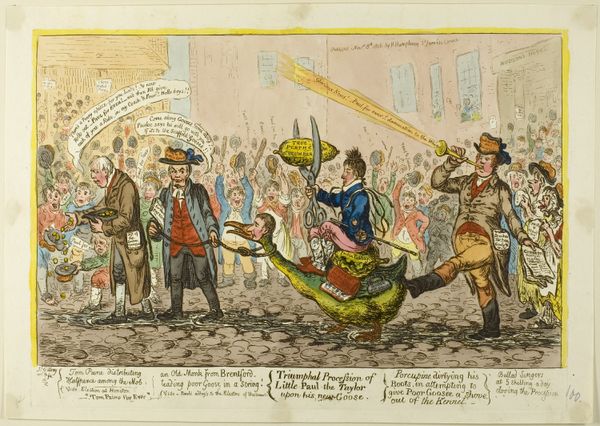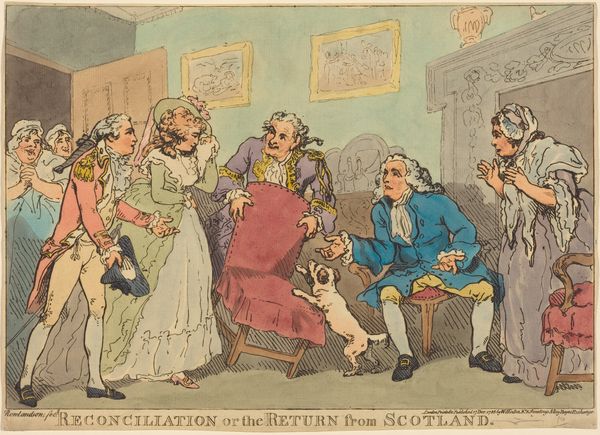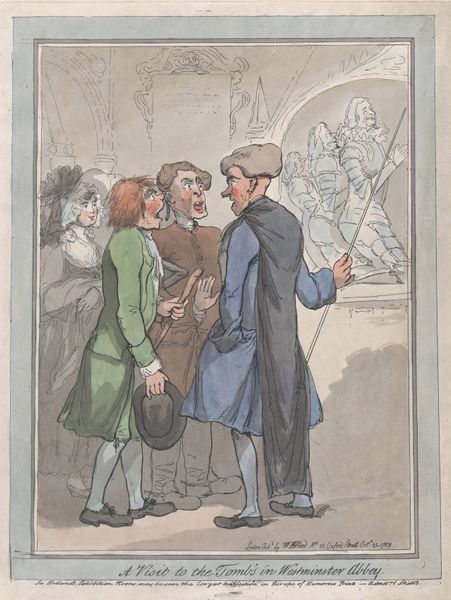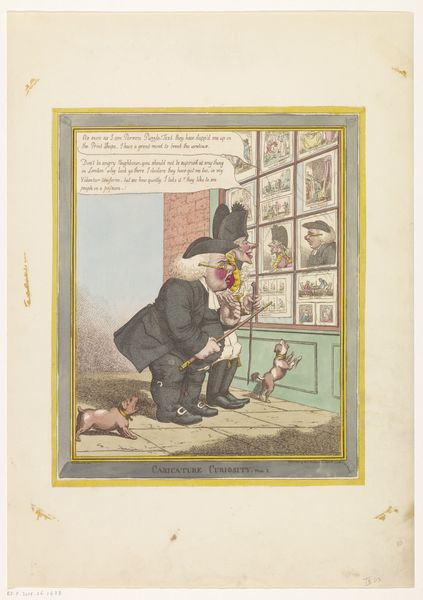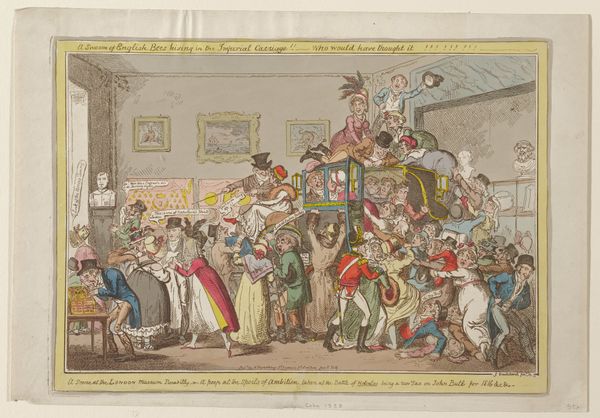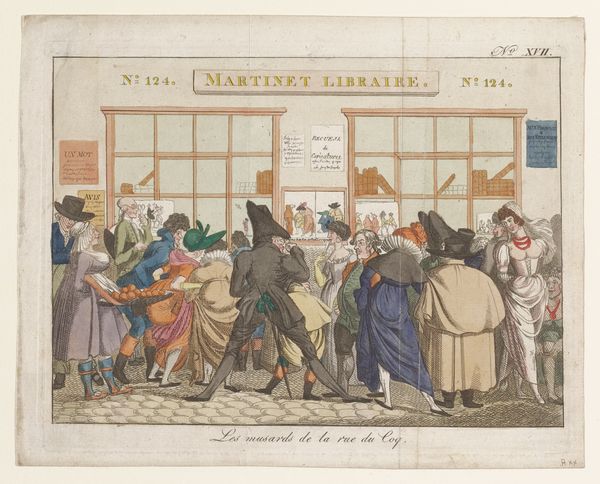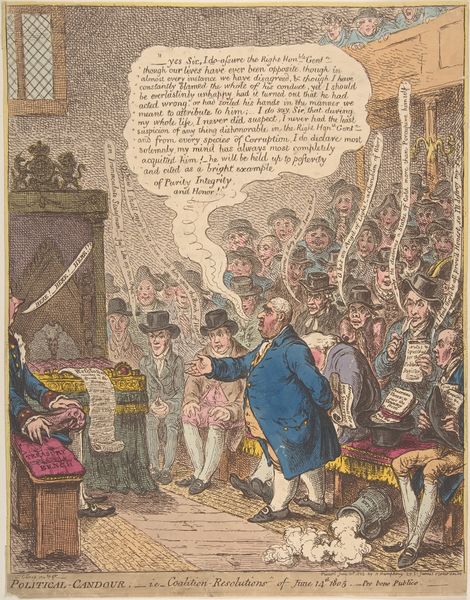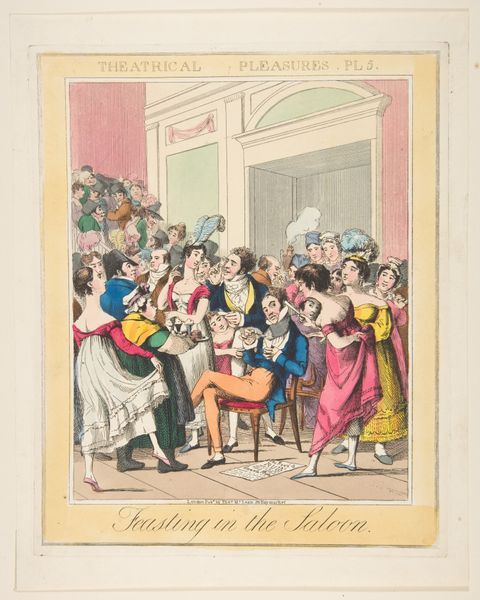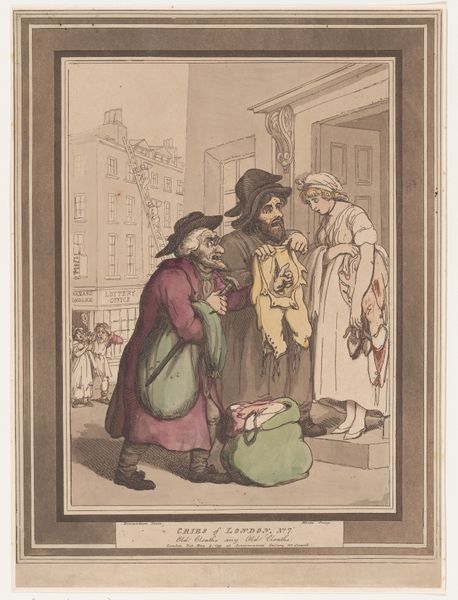
drawing, print, etching, paper
#
drawing
#
narrative-art
# print
#
etching
#
caricature
#
ukiyo-e
#
figuration
#
paper
#
romanticism
#
line
#
genre-painting
#
history-painting
Dimensions: 310 × 249 mm (image); 336 × 261 mm (plate); 336 × 279 mm (sheet)
Copyright: Public Domain
Curator: Let’s spend some time with this rather pointed piece, entitled "The Hustings," possibly dating from 1796, created by James Gillray. It’s an etching, a print on paper, residing here at the Art Institute of Chicago. The title refers to a political platform during an election, so it already gives away its subject matter. Editor: Ooh, my initial feeling is chaotic exuberance! Look at the crowd! It’s like a tidal wave of faces and exaggerated expressions—are they cheering, jeering? It is wonderful in its sheer raucous energy. What’s your take? Curator: The Hustings is, among many things, a commentary on political oratory and public opinion, viewed through the lens of caricature, a favored means of artistic, and social, critique at the time. Think of it as a complex narrative where symbols become characters themselves. Note the prominent figure addressing the crowd from a platform, a scroll labeled "Pewter-Pot Bill" clutched in his hand. Editor: "Pewter-Pot Bill," a name ripe with possibilities! It sounds like a drinking law of sorts—and given the figure holding up a frothing mug in the foreground, the symbolism can't be accidental. Curator: Indeed. Public opinion was, let’s say, heavily influenced by local taverns! Gillray’s brilliance lies in capturing this cultural dynamic. You’ll notice repeated images or the “mug,” as if their will must be satisfied or is motivated through some simple act. There is social commentary layered with many hidden associations of contemporary politics. Editor: He perfectly captures that sense of slightly menacing festivity, you know? The almost feverish pitch of political rallies and popular causes is universal and so deeply etched, no pun intended, in every bristling line. Even after so long, the composition is incredibly affecting. What kind of continuity do you recognize? Curator: Consider the tradition of political cartoons that flourished in Britain; it drew on the foundations of earlier forms like broadsides. Furthermore, it extends even to contemporary meme culture, as visual satire continues shaping opinions, influencing our perception of political happenings. Editor: From "Pewter-Pot Bills" to present-day headlines. Well, Gillray, it seems your voice, and your line, continues to resonate—with a rowdy and knowing wink, of course.
Comments
No comments
Be the first to comment and join the conversation on the ultimate creative platform.
